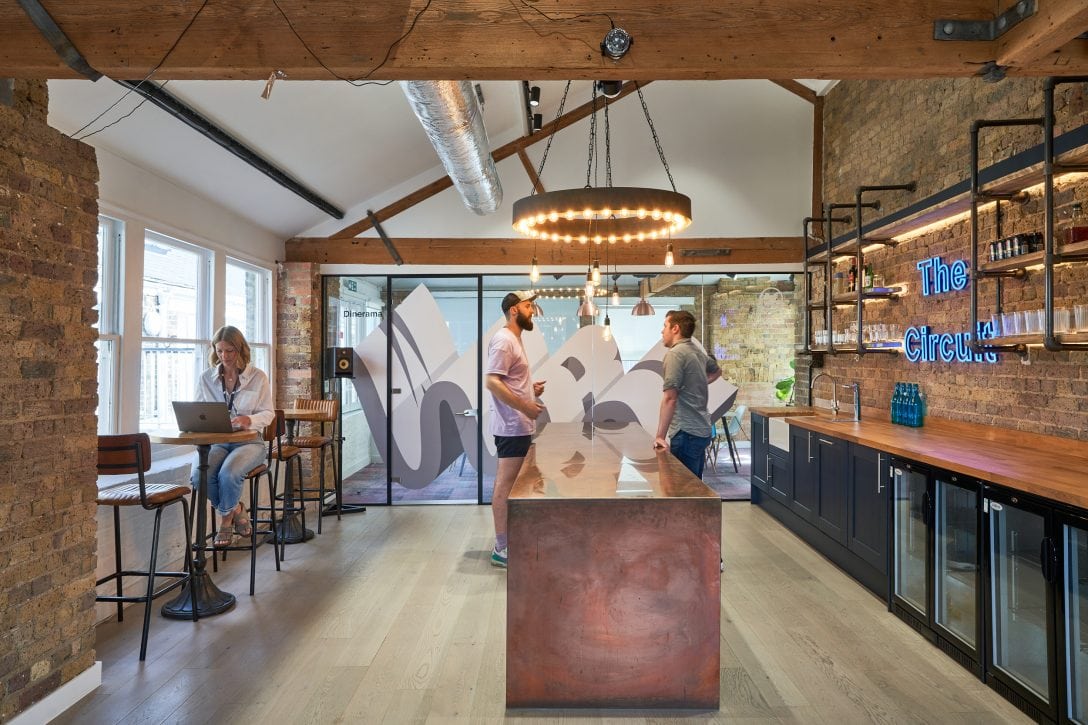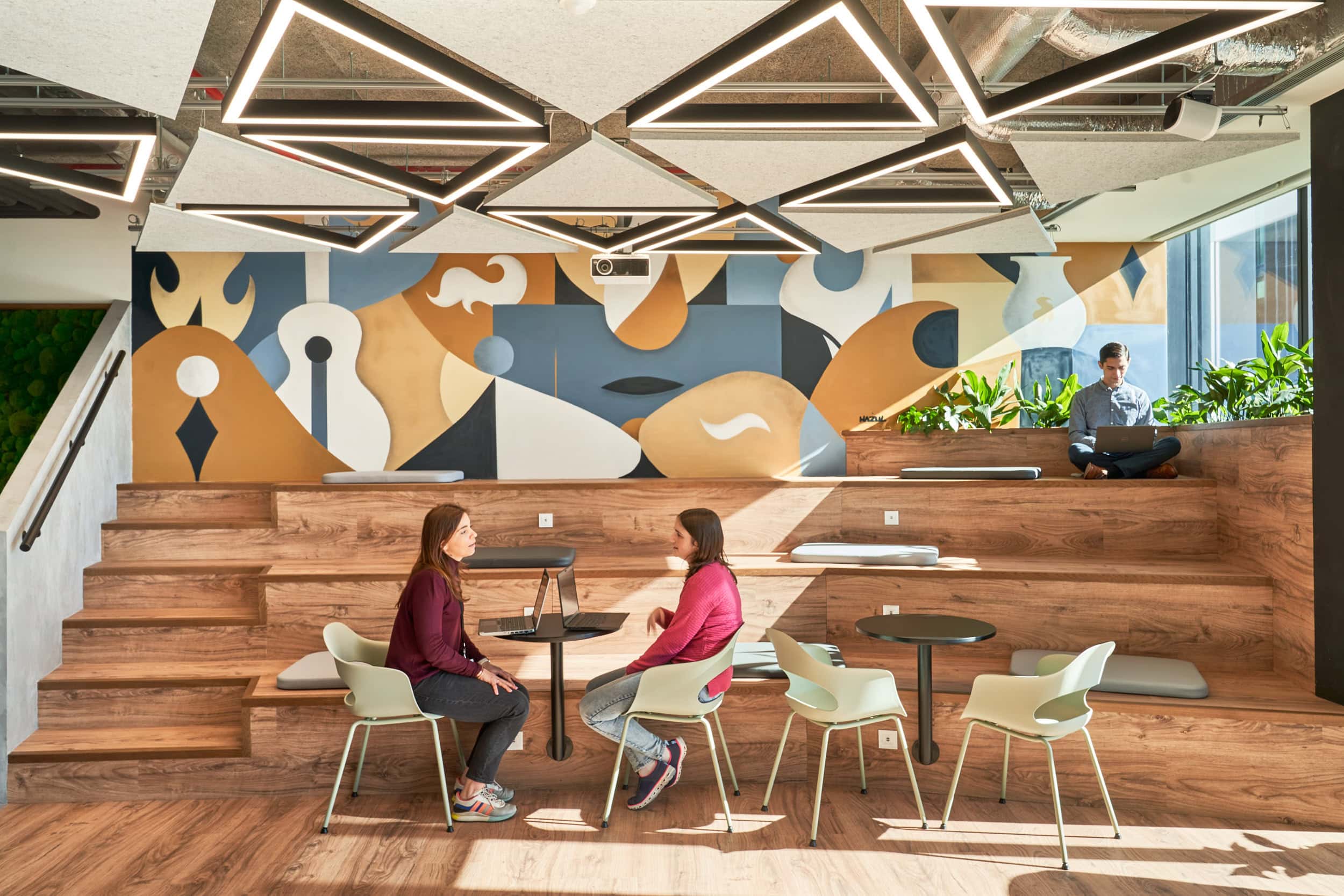The future of work: Gen Z and millennial workplace design trends
Delve into millennial workplace design trends and as we pinpoint crucial considerations that hold value for this growing demographic.

By 2025, millennials are projected to constitute 75% of the global workforce, closely followed by Gen Z. Crafting an environment that aligns with the preferences of this dominant workforce demographic necessitates a strategic approach that embraces the latest millennial workplace design trends.
As a powerful generation of workers that will soon define working culture, these two generations will have the ability to influence where and how they work like never before. They’re demanding more from employees than any generation prior.
As a generation, millennials place high value on having a good quality workspace. In a report by CBRE, 70% of millennials said they would be happy to sacrifice other aspects of their working lives to be able to work in a well-designed workspace, whether it’s a pay cut or compromising a promotion.
We’ve taken a look at some of the key millennial workplace design trends and preferences that this generation value the most and how you can implement them to attract the next generation of talent.
Learning at work
According to a report by CBRE, two-thirds of millennials place the chance to learn new skills as a big consideration when looking for a new job. In fact, many are happy to spend time outside of working hours on training. With a generation eager to learn and progress quickly, physically working with other colleagues is really important.
Working from home came with communication barriers for many. Without a way to easily communicate with your team, ask questions or oversee colleagues it was harder to learn new skills. Being present in the office, observing how your team work is the easiest way to learn for millennials starting out in new roles.
Create comfortable spaces where your team feel they’re in an optimum environment to be learning. This also tells your employees that your organisation is one that places high value upon learning and innovating.
While elsewhere in the office flexibility is more often encouraged, creating a distinct learning space may be the one area you consider dedicating to just one task. Not only does this visibly demonstrate that learning is valued within your organisation, but creating private space for learning means staff can feel empowered to embrace learning challenges and feel comfortable to push boundaries.
Flexibility can still be brought into these spaces by allowing different configurations of space through flexible furniture options. The goal is to create agile spaces where people can best learn, teach, collaborate, and innovate. Open space and movable and light furniture able to offer more styles and room variations that suit the team’s needs. Easy to move and store, tables with wheels and folding worktops, stackable chairs, and screens with castors will allow training rooms to be reorganized quickly and easily.
Connectivity and collaboration
Over a third of Gen Y and Gen Z say their best work happens in environments that enable them to both focus and collaborate. As a generation they prefer team based work. In comparison with other generations Millennials look for more opportunities to work with people they feel they can learn from.
An open plan space that can be used for a variety of tasks for the whole team encourages socialisation and collaboration. To make this a multifunctional space, you could incorporate partitions. This allows you to create smaller, more private spaces for when smaller team work or meetings are needed.
Another great way to encourage social interaction is by creating a central hub within the workplace. It could be a breakfast bar, large kitchen space, soft seating area, or whichever type of space that works for your organisation. Having this break out space encourages people to move away from their desks at lunch, converse with colleagues who they may not regularly work with or even hang out after work hours.

Sustainability
Millennials are also now placing more pressure than ever on their employers to tackle climate change. Nearly three quarters say they would take a pay cut to work for an organisation with clear environmental commitments. In a recent Millennial survey conducted by BUPA, one in three would turn down roles in companies with poor ESG credentials.
The millennial generation have grown up with much more exposure to climate change than any other generation. They have a reputation for being values- and sustainability-driven in the work they choose.
In a survey by Deloitte, it was found that employees who were satisfied with their employers social and environmental values were more likely to stay with their employer for more than five years.
There are many ways to involve sustainability in the design of either a new building or an existing one. Whether it’s technology to help waste management, air purification systems, using sustainable construction materials or choosing environmentally conscious furniture that has either been recycled or can be. Retrofitting older offices to meet sustainability goals, or starting from ground up with building methods that incorporate Environmentally Sustainable Design (ESD) elements, like the installation of solar panels can also help address employee environmental concerns.
Organisations are now having to step up their sustainability goals and, values and practices in order to attract the best new talent. If you want to learn more about how we design and build workplaces sustainability, then you can do so here.
Technology
A key factor of what sets millennials apart from previous generations is their understanding of technology. Millennials grew up connected and they expect information and resources to be where they need them when they need them. This means that millennials expect the workplace to provide this up-to-date technology that supports them in doing their jobs.
A recent survey conducted by Microsoft found that 93% of millennials cited technology as one of the top aspects of an office, outranking perks like canteens for food and drink. More specifically 81% said they wanted tech to help them connect more efficiently with their colleagues.
A large factor that drives the evolving workplace is the development of new technology. A workplace that provides high quality, modern tech and equipment is something millennials look for in order to create a truly connected and seamless workplace.
The pandemic forced businesses into improving their digital technology in order for teams to communicate no matter where they’re located. This improved digital connectivity now allows employees and organisations to easily adapt to new ways of working. It has also allowed companies that work worldwide to become more united.
But it’s not just about a room with video conferencing anymore. Millennials are seeking seamlessly fused audio-visual technology within a space that streamlines the total experience, bringing in content from the cloud, automatically configure the necessary resources, schedule the room booking and initiate calls through the video platform, while auto adjusting the lighting and sound. These are all incredibly powerful capabilities that are readily available today.
Merging AI with our video calls will help to improve the quality of our digital meetings. This will ultimately reduce the risk of video call fatigue. Whether it’s using voice commands, real-time translation or automatically recording meetings for those who couldn’t make it.
Millennial workplace design trends – what we’ve learnt
In this era of adaptability and opportunity, organisations seeking the best emerging talent must integrate this goal into the design of their workplaces, aligning it with millennial workplace design trends. The modern workplace should seamlessly offer high-quality technology, prioritise sustainability and well-being, while fostering collaboration and continuous learning. To be a sought-after destination for Gen Z, Millennials and upcoming generations, our workplaces must evolve to serve us, rather than requiring us to conform to them.
You can learn more about how to design your workplace to attract the best talent in the millennial generation. Get in touch with our design team today!

